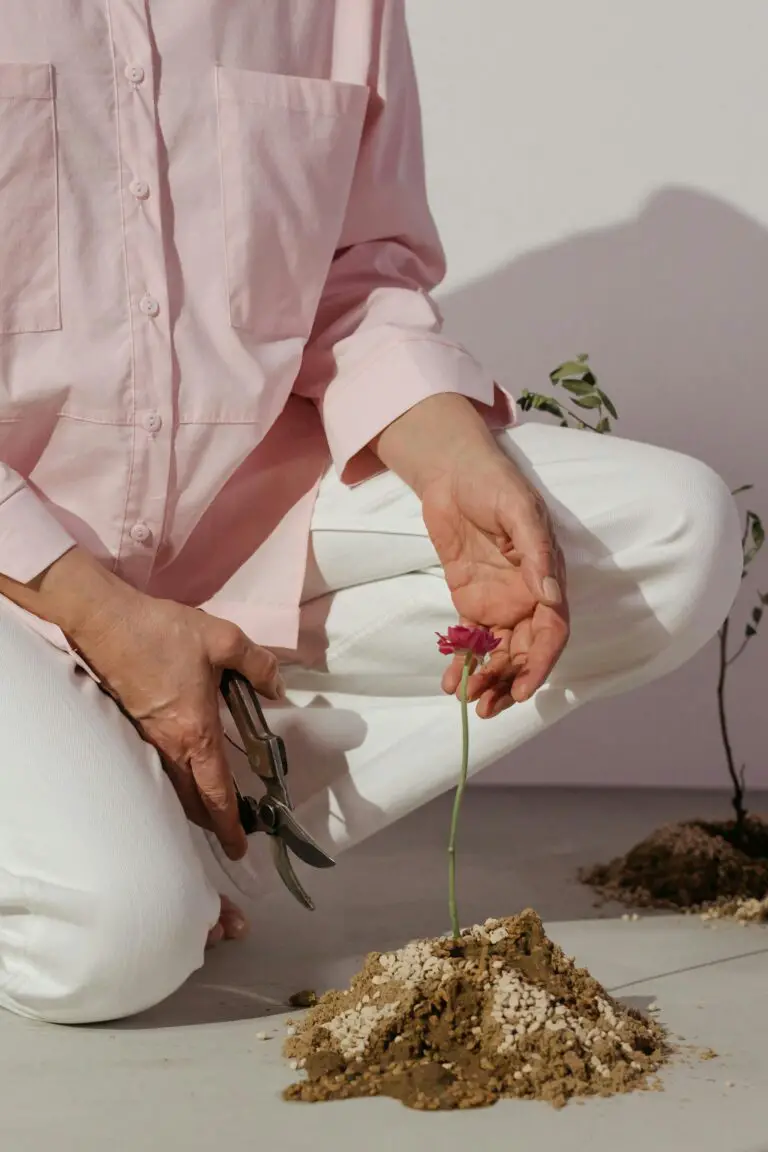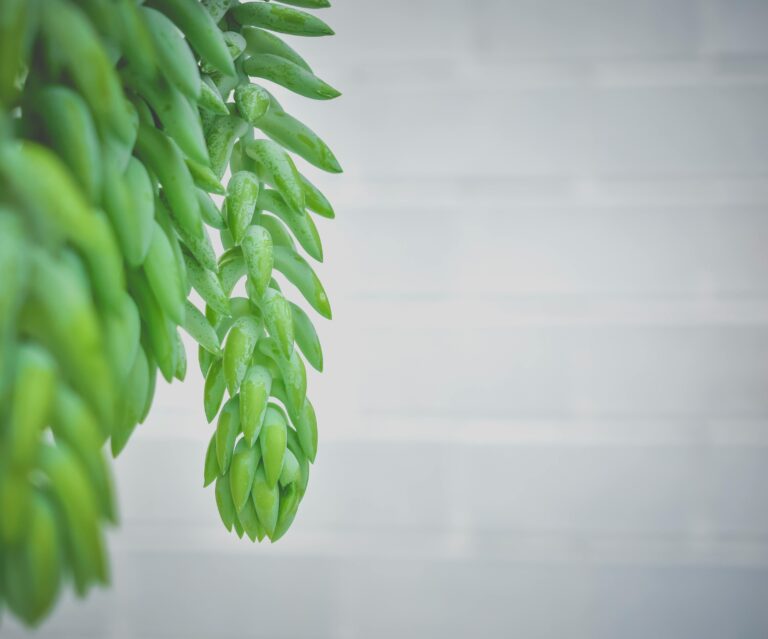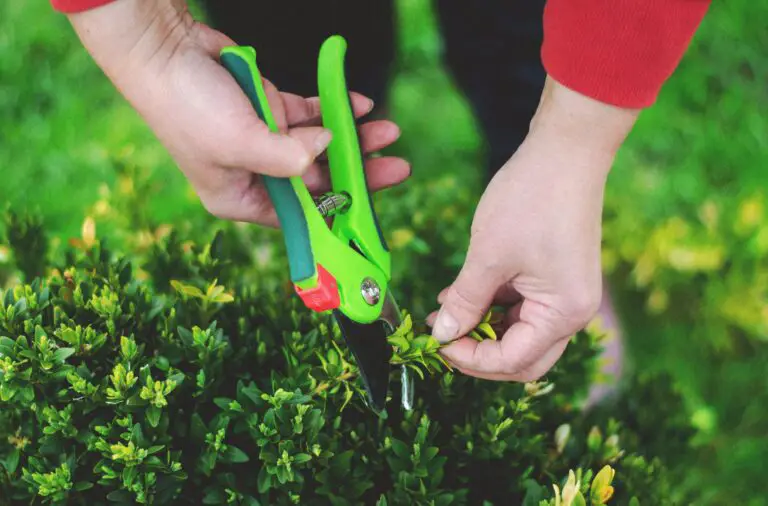Introduction to Sedum Pruning
Hey there, green thumbs and plant lovers! Have you ever found yourself gazing out at your garden, admiring the thick fleshy leaves of your sedum, and asking, “Should I prune my sedum?” Well, you’re in for a treat, because pruning sedum isn’t just about keeping up appearances—it’s a vital part of maintaining a healthy and vibrant garden. Let me slice into this succulent topic and share some cutting-edge tips (pun intended) with you!

Imagine you’re an artist, and your garden is your canvas. Sedum, known for its hardy nature and lush growth, can become a masterpiece with just a bit of trimming. Pruning helps you control the size and shape of these plants, ensuring they complement your garden’s design rather than overwhelming it. Still not convinced? Check out this external resource that lays out the fantastic benefits of pruning sedum. They say it promotes stronger stems, reduces the risk of pests and disease, and stimulates lush new growth—essential for keeping your sedum looking its best.
But here’s the real-world twist: like that one friend who can’t handle a full-on shaggy haircut, sedum needs a gentle touch. You don’t want to go Edward Scissorhands on it! A classic example comes from my neighbor, who thought his sedum looked a tad too bushy. A quick snip here and there, and voila! It was as if the plant thanked him by blooming even more splendidly, gaining that “just stepped out of a salon” look. If you’re not sure about the post-pruning care, take a quick detour to our guide on nurturing your sedum for all the deets.
So, let’s raise our pruning shears with confidence and give our sedum the boost it deserves. Remember, the goal is a garden that looks thoughtfully curated, not one that appears to have had a run-in with a lawnmower. Happy pruning!
Identifying Your Sedum Variety
Imagine strolling through a palette of plush greens, vibrant purples, and soft yellows. This isn’t a fantasy—it’s your garden, and the stars are the ever-so-versatile sedum plants. But did you know, not all sedum are created equal? Indeed, these succulent beauties come in a multitude of varieties, each with its own storybook of pruning needs.
Take the “Autumn Joy” for instance, standing tall with its broccoli-like blooms, it’s a completely different character compared to the “Cape Blanco”, which sprawls across the ground like a living tapestry. Knowing your variety isn’t just about being a keen botanist; it’s about understanding how to foster the best show of blooms and the most splendid foliage. And let’s not forget, the secret to a plant’s health often lies in the snip of your garden shears—a timely trim can mean the difference between full-bodied splendor and a leggy spectacle.

But where do you begin? Identifying your sedum’s breed is the first step. Once you’ve cozied up to the specifics, the path to perfect pruning lays ahead. For some, a good haircut in late spring encourages a bushier presence, while others might only need a gentle tidying post-bloom. Remember, it’s all about the personality of your plant!
To get you started on your journey of discovery, we’ve got a trove of tips on taking care of these resilient succulents. Dive in, and you’ll be conversing in the lush language of sedum in no time!
Determining the Right Time to Prune
When it comes to giving your sedum an enviable makeover, timing isn’t just a suggestion—it’s the headlining act. Just like you wouldn’t don a snorkel for a snowball fight, you wouldn’t prune your sedum at the wrong season. The question of “Should I prune my sedum?” leads us into a garden of growth stages and seasonal shifts, so let’s dig in!
If you’re the proud parent of sedum (also known as stonecrop), you know these succulent beauties are about as low maintenance as a pet rock. But that doesn’t mean they don’t enjoy a nice trim to keep them looking their rockstar best. Let’s start with the story of an ‘Autumn Joy’ sedum, who was feeling a bit down as its blooms began to fade. A well-timed snip in late winter or early spring, just as new growth starts peeking out, gave it a fresh start and avoided any awkward bald spots that late pruning might bring.
Here’s a slice of wisdom from the botanical barbershop: your standard sedum should be pruned in the early spring. Why? Because this is when your plant is gearing up for a season of growth, and removing any old or dead growth clears the stage for new performers. For those living the rock garden life with creeping sedums, consider a light trim after flowering to encourage a dense mat fit for a fairy tale.
Like tuning a guitar before a jam session, pruning your sedum in the right season ensures its performance in your garden is pitch-perfect. For the enthusiasts who seek the symphony of blossoms, remember that timing your pruning right impacts flower production. A sedum pruned too late might miss its cue for the summer show.
Now, imagine you’re in your garden, and you’ve just embraced the art of pruning when the air is still chilled by winter’s kiss, preparing for the grand unveil in warmer months. It’s not just about the “snip snip”—it’s about setting the stage for your plants to thrive. For more insights on this topic, take a gander at an in-depth discussion on whether you should let your sedum go au naturel before winter’s chill.
So there you have it, green thumbs—the insider scoop on when to give your sedum the snip. Remember our ‘Autumn Joy’ and how with the perfect timing, it bounced back with the pizzazz of a stage-ready starlet. Picture your sedum, ready for its seasonal close-up. Yes, you should prune your sedum, and with impeccable timing, your plants will be nothing short of perfect.
Pruning Tools and Techniques
Before you dive into shaping your sedum’s succulent foliage, let’s talk tools. No, you don’t need the bells and whistles of professional landscaping gear, but you do need a few essentials. A sharp pair of pruning shears is the MVP here — think of them as your trusty sidekick, ensuring clean cuts without bruising your precious plants. And let’s not forget gloves; sedum isn’t prickly, but safeguarding your fingers from accidental snips is always a smart move. Remember, it’s not about having a tool for every occasion, but about having the right tools for this one!
Now, onto the nitty-gritty: the proper techniques. Imagine you’re an artist and your sedum is the canvas. You wouldn’t go all in with thick brushstrokes right off the bat, would you? Same here. It’s all about finesse, starting with deadheading. Snip off those spent blooms just above a leaf node, and watch your plant redirect its energy into new growth like a phoenix rising from the ashes. But wait — there’s more! Sedum, in its diverse glory, may get leggy. Here’s where you step in with a strategic trim to encourage a more compact, robust form, giving it that well-manicured look without being overdone. Just like a skillful haircut can turn heads, so can a shapely sedum!
Variety matters, too. If you’re dealing with ‘Autumn Joy’, for example, you wouldn’t prune it mid-summer as you might for its ‘Summer Glory’ cousin. Timing is everything. Tailor your approach to your sedum’s particular growth cycle, and it’ll reward you with a dazzling display.
Still feeling a bit unsure? You’re not alone, and that’s why we’ve got a visual guide right here. This video doesn’t just tell you about the right tools and techniques — it shows you. Watch as these sedums go from ungroomed to unforgettable under a nurturing hand. Let it inspire your next pruning endeavor!
Dive in with confidence, trimming your sedum with the precision of a seasoned gardener. Each snip is a step towards vigor and vitality, guaranteeing yet another season of nature’s unrivaled artistry. And as you prune, remember — each sedum is a living sculpture, and you’re the sculptor shaping it to perfection.
Post-Pruning Sedum Care
After you’ve given your sedum a trim, there’s a burst of freshness in the air, and your plants look more defined than ever. But what happens next? Well, my green-thumbed friends, that’s when the real magic of growth kicks in! Let’s dive into the nitty-gritty of post-pruning sedum care to ensure those succulent beauties flourish.

Watering Wisdom
Water is like the elixir of life for your freshly pruned sedums. Imagine, if you will, your sedum is now gearing up to put that good energy into sprouting new growth. To help them along, keep that soil moisture consistent but not soggy. We’re going for the ‘Goldilocks’ of watering here—just right! Be cautious not to water-log those roots, as this can lead to root rot.
Fertilization Fundamentals
Think of fertilizer as the protein shake for your plants—giving them the boost they need to build up those green muscles. Apply a well-balanced, slow-release fertilizer designed for succulents and watch your sedum swell with pride. Always follow the recommended dosage because, just like with any good thing, too much can tip the balance from tonic to toxic.
Disease Diligence
Last but not least, keep a hawk’s eye out for any signs of disease. If your sedum starts looking a little lackluster or sports some funky spots, it’s time to play detective. Most diseases can be nipped in the bud (literally) with proper care and early intervention. Regular monitoring can save your sedum sanctuary from becoming a plant hospital ward.
By now, you’re equipped with a toolkit of post-pruning knowledge. Your sedums will not only recover from their haircut but will come back lusher and more vibrant than you could imagine. Just remember, the key to sedum success post-pruning is thoughtful watering, judicious fertilization, and disease vigilance!
Common Pruning Mistakes to Avoid
Are you eyeing those shears, thinking about giving your sedum a quick snip? Before you do, let’s chat about a few common pruning blunders that could spell trouble for your plump little plants. Remember, pruning your sedum is like sculpting a masterpiece—it requires a gentle touch and a keen eye!
For starters, timing is everything. Have you heard the tale of the eager gardener who pruned too early, only to find their sedum stunned by a late frost? It’s a classic example of good intentions gone awry. To avoid this, make sure you understand your sedum’s growth cycle. Prune after the threat of frost has passed to encourage lush growth without putting your plant at risk.
Next up is the overzealous chop. We’ve all been there—you start trimming, and before you know it, your sedum looks more like a crew cut than a coiffured crown. Less is often more when it comes to pruning; only remove what’s necessary to shape the plant and cut away dead or weak stems. This way, you’ll encourage your sedum to grow back fuller and healthier, instead of sending it into shock.
Another pruning pitfall? The dull blade debacle. Picture this: a well-intentioned gardener, using a pair of blunt shears that tear rather than cut, leaving their sedum with jagged wounds susceptible to disease. Always use sharp, clean tools for a precise cut that helps your plants heal faster and stronger.
Lastly, let’s tackle the “one-size-fits-all” fallacy. Not all sedum species should be pruned the same way. What works for Sedum Autumn Joy might spell disaster for your Dragon’s Blood Sedum. Do your research or consult with a local nursery to ensure your pruning approach is tailored to your sedum’s specific needs.
Let’s sidestep these pitfalls together. Prune with purpose and watch your sedum thrive, not just survive. And remember, even if you slip up, sedums are forgiving plants that rebound with gusto!

Pruning for Propagation
Have you ever looked at your flourishing sedum and thought, “Wow, I could make an entire garden from this beauty”? Well, you’re not far off the mark! Let’s dive into the green-fingered world of propagation through pruning. It sounds fancy, but it’s simply about taking pieces of your sedum and helping them grow into new, independent plants. Ready to learn how? Let’s get our hands dirty (quite literally)!
The best time to start is in the spring, when your sedum is just waking up from its winter nap and gearing up for a growth spurt. Imagine your sedum as a head full of curls; you want to trim those curls to encourage more full-bodied growth, right? Same principle here!
First thing’s first: Hunt down a pair of sharp, sterilized pruning shears because precision and hygiene are key to ensuring you don’t damage your plant or invite any pesky diseases. Get yourself comfortable in your garden space – maybe even make a little event of it with some uplifting tunes or the serene sounds of nature in the background.
Identify the healthiest parts of your plant – these will be your “starters”. You’re looking for firm yet flexible stems, about three to four inches in length. Swiftly and confidently snip these sections off; this decisiveness is crucial because just like a fresh haircut, clean cuts promote better growth.
Here’s a tip from the pros: pinch off the leaves from the bottom inch of your cutting to expose the nodes (these are like the launch pads for new roots). Sticking these freshly snipped cuttings directly into moist soil or a water rooting vessel is like sending an invitation to a growth party, and you’ll want to be sure your cutting RSVPs ‘Yes’.
Oh, and before I forget, here’s a snapshot of what your pruning endeavor may look like:

Now, don’t just abandon your baby cuttings; no, they need some tender, loving care. Keep them in indirect sunlight and make sure they’re cozy – not drenched – with a watering routine that’s more spa mist than monsoon. In a few weeks, you’ll see new roots waving hello, and before you know it, you’ll be planting them out into their own spots in your garden.
Remember, patience and gentle care are your best friends in the propagation game. It’s a test of your green thumb’s nurturing skills, but the outcome? A whole new generation of sedums swaying in your garden from what was once a single plant. How rewarding is that!
Benefits of Seasonal Sedum Maintenance
Are you eyeing your sedum plants, wondering if a little snip here and there is necessary? Let’s dive into why regular pruning isn’t just beneficial, but essential for your succulent sidekicks! Pruning isn’t just about keeping your garden neat; it’s a ticket to a vibrant, robust, and healthy sedum spectacle.
First off, imagine this: It’s a warm spring morning and each trim of your shears promises a burst of growth. Picture your sedum plants, standing tall, not just surviving but thriving with a full-bodied shape and copious blooms. That’s the power of seasonal maintenance! By trimming back overgrown stems, you encourage a bushier growth, preventing your sedum from getting too leggy and losing that precious fullness.
Not only does pruning keep the plant looking good, but it also hotwires their health. When you eliminate dead or old tissue, you’re essentially clearing the way for sunlight and air to reach the heart of the plant. This little act of garden kindness reduces the risk of disease and pesky pest infestations, setting the stage for a dazzling display of blooms when the season peaks.
And it doesn’t stop there. Regular maintenance is like a fountain of youth for your sedum. It rejuvenates your plants by stimulating new growth, ensuring that each year your garden is an encore performance better than the last. Plus, it’s the perfect opportunity to create more plant pals! Those cuttings? They’re not waste – they’re potential new sedums just waiting to take root.
Finally, consider the incentive of enhanced bloom quality – because who doesn’t want their garden to be the envy of the neighborhood? By pruning at the right time, you’re not just shaping your plants; you’re effectively timing and amplifying their showcase of flowers. Come bloom-time, your sedums will reward your effort with a spectacular floral fiesta, a magnet for pollinators and admirers alike.
So, do you still think sedums can fend for themselves without your attentive care? I think we know the answer. But don’t just take my word for it—let’s watch and learn from the pros. Here’s a video that beautifully illustrates the art of pruning sedum plants.
To wrap it up, regular sedum maintenance is more than a chore; it’s an investment in the future of your garden. Now, armed with shears and this newfound knowledge, go forth and secure the splendor of your sedum sanctuary!
Frequently Asked Questions about Pruning Sedum
Have you found yourself staring at your sedum plants, wondering if a little haircut is due? You’re not alone! Let’s dig into the nitty-gritty of sedum pruning, how it’s not just a “nice-to-have” but an essential part of seasonal care, and how to troubleshoot those pesky issues that have you scratching your head.
When is the Best Time to Prune My Sedum?
Timing is everything, isn’t it? For sedum, it sure is! The perfect time to prune is in the early spring, just as the new buds are making their debut. Imagine you’re a director cueing an actor for their scene — you’re essentially telling your sedum, “It’s showtime!” This gives them a fresh start and ensures they look their best for their growing season performance.
Can Pruning Really Affect My Sedum’s Health?
Absolutely! Let’s think of your sedum like it’s an athlete. Without proper training and diet (in this case, pruning and care), it just won’t perform as well. By removing dead or overgrown parts, you’re allowing the plant to focus its energy on growing stronger and healthier. It’s like you’re giving it a secret success formula — minus the cloak and dagger.
What Are Some Real-Life Examples of Sedum Pruning Success?
Imagine your neighbor, Jane. She thought sedum pruning was a myth! Now, her sedum is the talk of the town after she started regular pruning. Her plants bloomed with such vigor that they could be mistaken for botanical superheroes!
Is There a Pruning Technique Specific to Sedum?
There sure is! Think of it like a dance; you need the right moves. Compact sedums benefit from a pinch, similar to training a tiny puppy with a gentle tug. For taller varieties, think of it as giving a high-five to the plant. You want to cut back the stems to the strong, fresh growth waiting below the surface. The right technique is like knowing the secret handshake — it makes all the difference!
It’s essential to look out for ‘The Flop,’ a common stage act that tall sedum varieties like to perform if left unpruned. They grow too tall, too fast, and then splat! They hit the ground, looking less than fabulous.
What Happens if I Don’t Prune My Sedum?
Think of it as skipping leg day at the gym. Your plant will go on, sure, but it’ll be more susceptible to pests and diseases, and won’t have that show-stopping quality you’re aiming for. Unpruned sedum can become leggy, sparse, and frankly, a bit sad-looking. Like a garden of forgotten toys, and we can’t have that, can we?
Now, let’s see pruning in action! Here’s a video demonstration that will walk you through the steps to ensure your sedum plants thrive:
What Should I Do if My Pruned Sedum Looks Unhappy?
Don’t panic! Sometimes, plants need a moment to rebound. It’s like having a bad hair day after a visit to the salon — things might look dicey initially, but there’s always a bounce back. Give your sedum some TLC, maintain consistent watering (but don’t overdo it) and watch as it transforms. If things don’t improve, consider a soil test to determine if your beloved green friend is missing any crucial nutrients.
There you have it, fellow green thumbs! With these tips and techniques, you should feel confident to go forth and prune! Your sedums are counting on you to help them put their best leaf forward. Go get ’em, plant whisperer!



